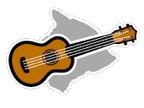You can find many explanations of the ebonizing process by just googling the phrase “Ebonizing Wood” (Here’s one).
The key thing to remember is that low tannin woods require a tannin boost in order to trigger a deep ebonizing effect. What I’m using is a South American bark called Quebracho that the leather industry uses ( I got mine here: www.shellac.net ). It’s not cheap but an 8 ounce bag will probably last you years since a tablespoon will create a quart of the the “tea”.
The iron acetate is created by dissolving a #0000 pad of steel wool into a quart of at least 5% vinegar (several websites claim that apple cider vinegar works best). You need to be sure to wash the steel wool with a strong detergent to remove the oil. it’s normally coated to retard rust and also to shred the pad before putting it into the vinegar. The dissolving process can take at least a week to complete but if you’re really in a hurry you can accelerate the process by heating the slurry jar in an open pot of boiling water for 4 or 5 hours (pro-tip: do this when the rest of your family is gone for the day to avoid angry “discussions”).
When everything is ready, you soak your wood in the Quebracho tea and let soak in until the surface is just barely damp, then you apply the iron acetate. It’s important that whatever you use to apply the 2 mixtures don’t get contaminated by the other mixture, since that will set off the reaction inside your jars reducing their effectiveness. (I usually have just used a paper towel since I can then just throw it away before I accidentally put it in the wrong container.)
You will probably have to repeat the process a few times to achieve the darkest color but you can repeat as often as you need to if you find, for instance, that you sanded through the ebonized layer. That layer should soak in deeper than the surface, but you can definitely go through it with hard sanding.
